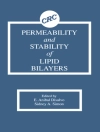Polyhydroxyalkanoates: Biosynthesis, Chemical Structures and Applications opens with an expose on employing extremophiles as polyhydroxyalkanoate (PHA) producers. The authors suggest that extremophiles may be easily subjected to a long-term continuous cultivation processes, which considerably enhances overall productivity while reducing the energy demand in biopolymer production. Conversely, a range of challenges remain, including improving the metabolic capability of extremophiles, recycling of fermentation broth, various process engineering aspects, and adaptation of bioreactor materials and process controlling devices to conditions shortening their life span. Following this, the enzymes, regulators and genes involved in PHA biosynthesis are analyzed for their potential as an alternative to synthetic polymers. They are synthesized as intracellular carbon and energy storage compounds from over 300 species in the presence of excess carbon and under oxygen, nitrogen or phosphorus limitation, or after p H shifts. This collection goes on to suggest PHA as a promising alternative for petrochemical compounds. The challenges of increasing economic feasibility in the global market, minimizing costs, and improving the polymer yield are reviewed. Additionally, recent research on structural variations of PHAs has been centered on the design, biosynthesis, and properties of biodegradable and biocompatible materials, which can be used for bioengineering. This collection also includes a focus on the roles of polyhydroxyesters and PHAs in the construction of tissue engineering scaffolds, which are used in bone, cartilage, ligament, skin, vascular tissues, neural tissues and skeletal muscles. Their exceptional properties, such as high surface-to-volume ratio, high porosity with very small pore size, and biodegradation have made them gain a lot of attention in this field. The biomedical applications of PHAs are explored, including in-vivo implants, tissue engineering, anticancer agents, drug delivery, biocontrol agents and memory enhancers, as their low acidity allows for minimal risk in usage. In order to enhance its applicability in various fields, the blends and nanocomposites of PHAs are studied and their potential challenges, applications and opportunities are addressed. After which, the industrial and agricultural applications are described, with specific focus on potential applications of PHAs in packaging. Other applications include moulded goods, paper coatings, non-woven fabrics, adhesives, films and performance additives. Recent advances in this area, by means of peer-reviewed literature and patents, are introduced and discussed. Moreover, innovative strategies for the synthesis of novel polymer blends, adequate for food contact applications, are presented. (Nova)
Patricia Kelly & Harvey Williams
Polyhydroxyalkanoates [PDF ebook]
Biosynthesis, Chemical Structures and Applications
Polyhydroxyalkanoates [PDF ebook]
Biosynthesis, Chemical Structures and Applications
Acquista questo ebook e ricevine 1 in più GRATIS!
Formato PDF ● Pagine 332 ● ISBN 9781536134407 ● Editore Patricia Kelly & Harvey Williams ● Casa editrice Nova Science Publishers, Inc. ● Pubblicato 2018 ● Scaricabile 3 volte ● Moneta EUR ● ID 6877660 ● Protezione dalla copia Adobe DRM
Richiede un lettore di ebook compatibile con DRM












